It's always the same anecdote.
I'm sorry that you have to deal with Bradford Pear. It's something we don't deal with because we live in a different climate.
No, I'm 99.9% native work. Always have been.
But we use one tool in the sub and tropics that is beyond anything else and hasn't "escaped" in 80 years of use.
Because it's my job.
Why?
There are sterile exotics that work that are exceptional at this job, much better than natives.
Stop being so black and white.
A raised garden bed won't prevent the rhizomes from travelling, unless the bed is permanently sealed where it contacts, or near contacts, the ground. Remember that plastic can crack, split, and deform, concrete can crack also.
If you know a plant is invasive and difficult to control at the best of times (unlike an invasive that can have seeds removed or similar), then have a long think about it. It's like playing catch with a live hand grenade; the safest way is not to play. Clumping bamboo is the only choice if your climate permits it.
For me, on choosing what to plant, I would first consider that benefits me (food, flower, aesthetic, biomass) and that can be endemic, native, or exotic. If nothing suits that has a value, I would then choose a diverse small planting in endemic species to and around your area (also consider recommendations from climate scientists if you area will get warmer/colder/wetter/drier and select some species suited to that change).
https://universal-blue.discourse.group/c/bazzite/5
Discussion forum for the readers.
Change your location or even the server at your current one? I can access.
Yes they do!
Ohhhh, you were talking about YOUR "Wood Duck" and I likely live in another country and our "Wood Duck" is different. Wondered why the photo was off; "this person doesn't even know what a Australian Wood Duck looks like, what a flaming galah".
One of the world’s longest commercial trials of a seaweed supplement that the global meat industry hopes could slash methane from beef cattle has recorded much lower reductions in the potent greenhouse gas than previous studies.
Yes mate, we always get our clean fill from "garden stores".
Asbestos now found in sold soil. Whoops.
We couldn't have seen this coming. Even one of the comments said it was just mulch.
Yes, the atomic/immutable version.
Universal Blue spin adds some extras.
I'm running Mint at 75. I'll jump into my Fedora dual boot and check.
Edit: works in ublue kinoite.

My monitor will only do 75 over Displayport. 60 with HDMI.
Could be the issue like you say.
There is no reason not to use Syncthing besides KDEConnect has features other than sharing files that might come in handy.
Syncthing is a much better tool for a hands-off approach once set up so sure, why not?
The Windows version used to be shit. That's no longer a problem. That's about the only negative I remember. Otherwise you can have it doing a lot of work between devices or only sending when you feel like it. I force stop it on my phone and then invoke through share when needed.
I brought up Syncthing as it will function the same way, in a more hands off way (by choice if you want, automagically or forced) if you needed to share files/folders between devices. Not only for passwords.
Local file sharing:
I use KDEConnect on all my devices (Windows, Linux, GrapheneOS, Work Galaxy Tab) and it works just fine. Never needed to try anything else.
Syncthing as well for keepass files.
In Australia, the Rurals do it for free. You get paid in "camaraderie/comradery".
Pinch Mini and Punch Bug. 2 for old school, one for new.
Neighbours injected "Spotto", a punch for a yellow car.
And that was it. No rules about arguing or how hard you hit, no holds barred in the back seat.
Some reports and popular books, such as Bill Gammage's Biggest Estate on Earth, have argued that extensive areas of Australia's forests were kept open through frequent burning by First Nations people. Advocates for widespread thinning and burning of these forests have relied on this belief. They arg...

Some reports and popular books, such as Bill Gammage's Biggest Estate on Earth, have argued that extensive areas of Australia's forests were kept open through frequent burning by First Nations people.
A key question then is: what does the evidence say about what tall, wet forests actually looked like 250 years ago? The answer matters because it influences how these forests are managed.
Our key conclusion is that these forests were not open or park-like-as was the case in some other vegetation types in Australia.
The compelling evidence we compiled all indicates mountain ash forests were dense, wet environments, not open and park-like, at the time of British invasion.
Most Australians will never have heard of the kakarratul, an elusive silky mole that burrows in the desert and has no eyes. Now a growing threat is shrinking its habitat.

Indigenous rangers in the Western Desert area of northern Western Australia recently spotted a small mole covered in silky golden hair, marking the second sighting in six months. The desert region is home to unique species adapted to the hot, dry environment. The rangers play a crucial role in monitoring and protecting these lesser-known desert species. Ecologists highlight the importance of documenting desert species, especially as climate change impacts their habitats. The rangers, like Lynette Wildridge, work tirelessly to track and protect these elusive animals, showcasing their dedication to conservation efforts in the remote desert landscapes.


More info and pictures: https://aus.social/@treevan/110293053188000541
One recipe:
[!up20szal1hh71.jpg](https://postimg.cc/w7v7rw6y)
Articles:
https://www.biochar-journal.org/en/ct/77-Planting-Urban-Trees-with-Biochar
https://stockholmtreepits.co.uk/ - https://www.researchgate.net/publication/341343983_Tree_Pits_with_Structural_Soils_-_Practice_Note_Version_12
https://medium.com/carboculture/how-to-use-biochar-for-structured-soil-plant-beds-in-urban-areas-8a45108e799
A Colorado State University experiment spanning more than two decades has found that removal of apex predators from an ecosystem can create lasting changes that are not reversed after they return—at least, not for a very long time.
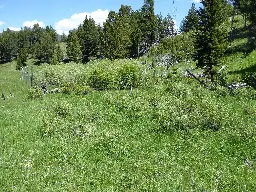
A 20-year experiment conducted by Colorado State University researchers in Yellowstone National Park found that restoring apex predators like wolves was not a quick fix for ecosystems degraded by their absence. While wolf reintroduction lowered elk populations, willows and aspens did not recover as strongly as expected even after carnivore numbers rebounded naturally. Constructing fences and dams showed the importance of reducing browsing and increasing water access independently. The study challenges the idea that easily reversing food webs can undo lasting ecological changes.
They are beloved trees in the Australian landscape, but snow gums face an existential threat.

This article discusses how climate change is threatening Australia's snow gum trees through more frequent and intense bushfires. Snow gums have not evolved to cope with higher fire frequencies and are struggling to recover after multiple fires in short succession. Researchers have found that over 90% of snow gum forests in Victoria have burned at least once since 2000, and 30% have burned 3-5 times since 1938. With less time between fires, the younger snow gums do not have enough time to mature and produce seeds, potentially leading to ecological collapse of snow gum woodlands. Experts are calling for more protection of remaining old-growth snow gum forests and a shift towards prioritizing ecological assets during bushfire seasons.
Usually I post to slrpnk.net and they are currently on 0.18.5. None of my posts/comments (2 posts, 1 comment) are federating.
Just letting you know if anyone here is posting to non-updated instances, it's possible they aren't going through. Yet completely possible they are. Who knows with this federation business.
I'm going to go to the Winchester Engadine Maccas, grab a schooner shit my pants and wait for this to all blow over.
Silvia Pinca is removing invasive species and replanting native trees on her New Zealand land. Kiwi and other birds are already making themselves at home.

Silvia Pinca purchased 80 acres of land in New Zealand that was previously used as a pine plantation. She is working to rewild the land by removing invasive species like pines, pampas grass, and banana passionfruit and replanting native trees and shrubs. So far she has removed over 32,000 pines and planted hundreds of native seedlings. Native birds are starting to return to the land to help with seed dispersal. Her long term goal is to restore the native forest ecosystem and create a nature reserve.
Outrage in Colaton Raleigh after trees felled by government agency without consulting community
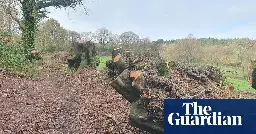
Residents of Colaton Raleigh village in Devon, England were upset after discovering that 100 ancient beech trees located on a conservation site had been felled without consulting the local community. The Forestry Commission approved an application by a local landowner to cut down the trees. Residents said the trees were an important part of the local heritage and habitat, and that it will take over 200 years for new trees to regrow. Experts said engaging local communities is important for conservation decisions.
Researchers will conduct tests in the Six Rivers National Forest, treating each test site with a unique biochar mix.
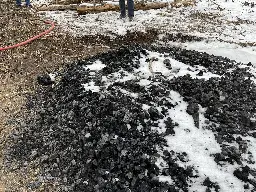
https://now.humboldt.edu/news/research-explores-capacity-biochar-combat-climate-change-improve-forest-soils
Researchers will conduct tests in the Six Rivers National Forest, treating each test site with a unique biochar mix that’s seeded with a native, pollinator-friendly plant mix to compare growth between test sites.
They’ll measure changes in vegetation productivity, diversity, native species composition, soil carbon, nutrients, metals, bulk density, seasonal water availability, and microbial community composition over a five-year period.
New technology that turns waste into reusable goods for energy and agricultural applications is a step closer to commercialisation, following trials.
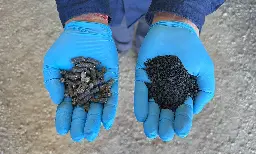
The article discusses a new Australian innovation called PYROCO that uses high heat to turn waste like sewage sludge and food waste into a carbon-rich product called biochar. This process removes pathogens and can turn waste into resources like fertilizer or materials for batteries. The technology has undergone trials and shows promise to more sustainably manage waste. Researchers are now working to commercialize the technology.
The North East Forests Alliance (NEFA) is calling for ministerial intervention to protect fire-affected habitat after a disappointing Land and Environment Court ruling today. [1] On behalf of NEFA, EDO took the state government-owned logging company to court in August to stop it from log...

The North East Forests Alliance is calling for ministerial intervention to protect fire-affected habitat after a disappointing Land and Environment Court ruling today.
On behalf of NEFA, EDO took the state government-owned logging company to court in August to stop it from logging Braemar and Myrtle State Forests.
"In court, Forestry Corporation argued the EPA could change logging rules whenever it considers it necessary. But Forestry Corp has frequently refused to accept the EPA's attempts to implement improved logging to reduce impacts in burnt forests and to reduce impacts on Koalas."
"EDO Managing Lawyer Andrew Kwan said:"While the decision is disappointing, importantly the court ruled that it was open for NEFA to take the action.
"We welcome confirmation for the first time that the community can take critical action in the court to protect native species in circumstances where the authority to log state forests is disputed."
For centuries, hedgerows defined the boundaries of agriculture. A hedgerow can be made up of any densely planted growth bordering a field that is
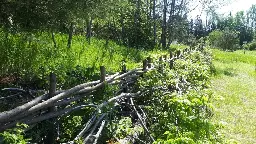
Some midwestern fields are still bordered by hedgerows, but most US farmers don't plant hedgerows and are skeptical of their benefits, worrying that they might introduce pests or predators to their farmland.
North American farmers are also loath to reduce the size of their crop-producing land by adding a living border or to deal with potential difficulties when the hedgerows require maintenance.
Even in the United Kingdom, hedgerows experienced a downturn in popularity as farmers moved towards more heavy equipment for working their fields and maintaining their boundaries.
While US farmers have been slower to embrace hedgerows for their ecological benefits, the science of hedgerows as natural havens has become inarguable.
A farmer looking to embrace the benefits of hedgerows as field boundaries first has to identify what kind of boundary they need.
https://inv.vern.cc/watch?v=WoprVhpOKIk - Hedging (1942)


https://www.npr.org/2023/11/17/1213600629/-it-feels-like-im-not-crazy-gardeners-arent-surprised-as-usda-updates-key-map
https://today.oregonstate.edu/news/new-plant-hardiness-map-used-gardeners-nationwide-and-based-osu-climate-data-unveiled
The Italian company behind Ferrero Rocher and Nutella is giving up on its farm in southern NSW saying the long-term climate is not conducive to hazelnut farming.

- Ferrero, the company behind Nutella, has decided to discontinue its hazelnut farming venture in Australia.
- The venture, which was initially seen as a boost for the Australian hazelnut industry, has been deemed commercially unviable due to low hazelnut yields.
- The decision was made based on factors such as return on investment and the current climatic and financial situations.
- Buyers interested in the land would need to invest significantly in removing trees and preparing the land for new planting.
- The failure of the venture highlights the need for hazelnut varieties that are better suited for warmer climates in Australia.


This is a future I don't want to live in.
Seriously though, here's the article:
https://www.abc.net.au/news/2023-11-17/gloucester-dave-evans-bicentennial-trees-closed-wa-government/103118524
- The Gloucester and Dave Evans Bicentennial Trees will be closed for the next 12 months
- The state government has not ruled out permanently closing the trees for climbing
- Climbing the 60-metre tall trees is a popular activity for tourists
A group of prominent environmental scientists devised this list of 5 things we must see in Australia’s new national environmental laws, if we are to avoid calamity and hasten recovery.

The federal government is reforming our national environmental law.
How can we assess whether these new laws can prevent further species loss and habitat destruction?
-
Protection of sufficient and connected habitat must be central to Australia's national environmental law.
-
The new laws must state policy objectives such as no new extinctions and no actions that accelerate climate change.
-
It's essential ministers not only have regard for environmental standards but also follow them to the letter of the law.
-
Our national environment laws must make room for genuine Aboriginal and Torres Strait Islanders participation in how matters of cultural and environmental significance are managed.
-
Our new nature laws must interact with federal cultural heritage laws, which are also under reform.
The removal of senescing trees or those which pose a genuine risk to health or property is part of professional urban tree management.

The removal of senescing trees or those which pose a genuine risk to health or property is part of professional urban tree management. However, there are many requests for tree removals that are not based on a genuine likelihood of injury or property damage, but rather on an unfounded fear of what might happen or where the tree is considered to be in the way of some other activity. Across Australia, about 97% of requests for tree removals made to local government authorities are ultimately approved. Such a high rate of approvals provides a threat to the fabric of the urban forest.
In many instances, the removal of sound and healthy mature trees has unexpected costs and consequences. The loss of shade can have an effect on the temperature experienced within a dwelling over summer and this may have health consequences in terms of heat-related illnesses if the occupants are elderly. Swelling of reactive clay soils may be exacerbated by a tree removal, which can contribute to problems with footings and foundations and wind damage may also be greater after the removal of a tree than it was when the tree provided a filtering of and shelter from strong wind.
Too often the consequences of removing safe and healthy trees are not fully considered when undertaking the cost-benefit analysis associated with any proposed tree removal. This brief paper provides a framework for decision-making that could be used in defending safe and healthy trees from removal and allows the identification of any unforeseen consequences from such removals.
A plan of action is adopted to help save the world's only wild macadamia plants from extinction.

A new national recovery plan has been adopted to help save the world's only wild macadamia plants from extinction.
Shock finding In 2019, Queensland researchers were shocked to discover the global macadamia industry may have originated from nuts from a single tree or a small number of trees taken from Queensland to Hawaii in the 19th century.
"We reviewed the plan, and then it just got stuck in politics, and we've been anxiously lobbying to get the new plan approved because it really does guide our actions for conserving wild macadamias," Ms Bond said.
The recovery plan notes that populations of wild macadamias on private land in Queensland are generally located where protective fencing and weed control would have little or no negative economic impact on the viability of farm enterprises.




